Watch out! These are 5 of the most dangerous critters found throughout SC
When thinking of South Carolina, the first things that may come to mind might historical events and places, architecture, white sand beaches or even hiking — but would dangerous inhabitants make the list?
With the variety of regions in the Palmetto State, from coastal marshes and wetlands to dense forests and mountainous terrain, each of these ecosystems comes with its own set of dangerous critters that may be specific to each geographic area.
However, many of these can be found anywhere throughout the state regardless of the region.
Here are five of the most dangerous creatures to watch out for in South Carolina.
American Alligator

American alligators are large reptiles that are generally non-aggressive towards humans, especially if an adequate distance is kept between the two, and can be seen in abundance in different areas throughout the state. Observing them in their natural habitat ranks high on the list of South Carolina’s many attractions but may also startle an unsuspecting visitor.
Alligators can live to be more than 60 years old, grow more than 14 feet and even weigh up to 1,000 pounds. The largest ever reported in SC was 1,025 pounds and if you’re curious the largest in Florida was 1,043 pounds, per the South Carolina Department of Natural Resources.
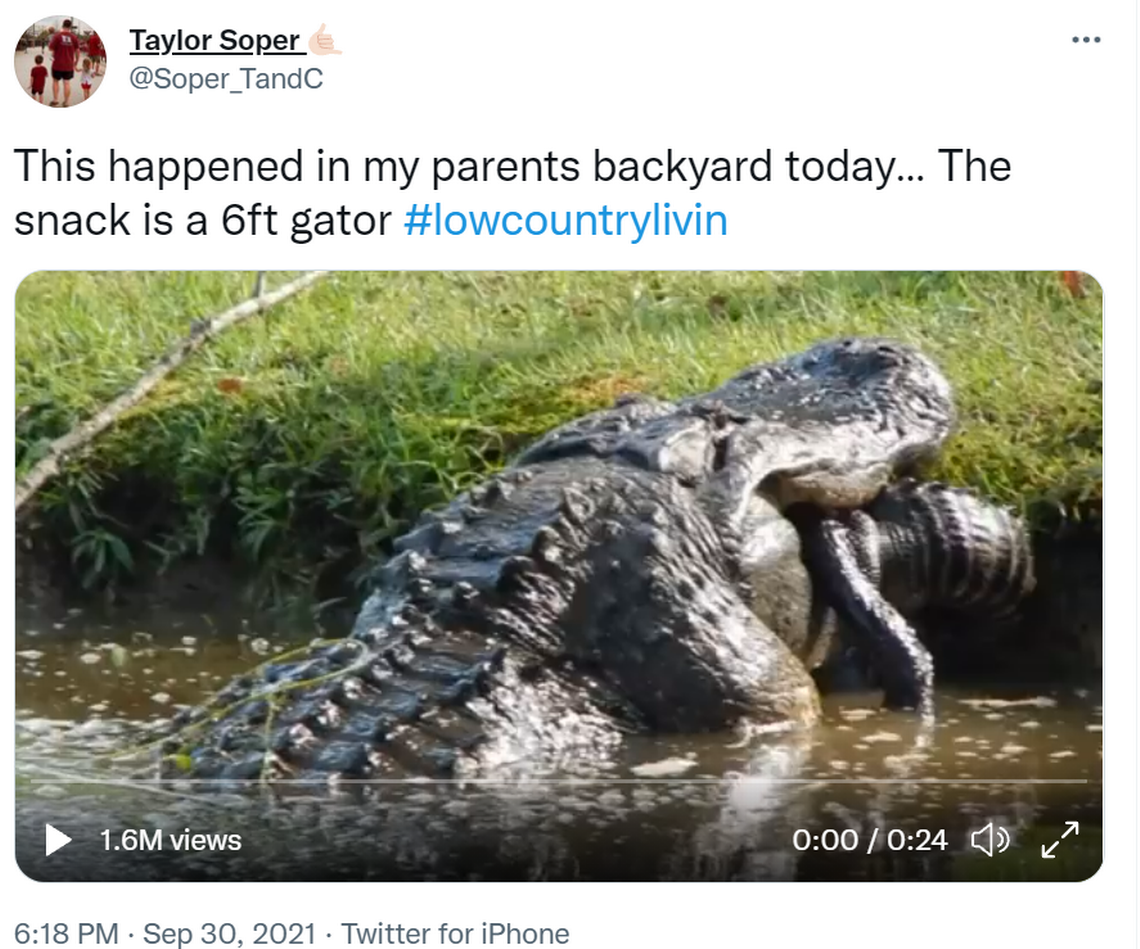
Despite their normally relaxed demeanor, these reptiles can attack in an instant, stalk their prey and can be deadly if they choose to attack, which has been reported numerous times throughout the state. Alligators within the Palmetto State are at their most aggressive between the months of April and June during their breeding season.
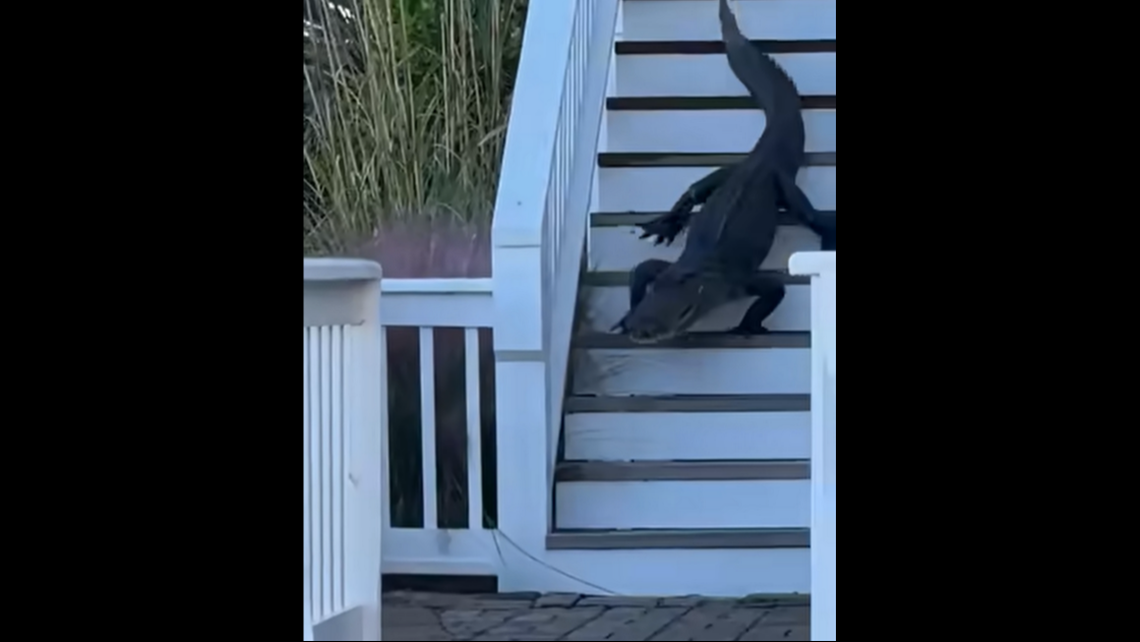
It is important to remember to never feed or harass an alligator, regardless of the time of year. This is for the safety of the alligators themselves as well as any person who may come across one of these large reptiles in the present or future. When an alligator is fed by a person, this triggers the reptile to associate people with food, which can lead to dependency, lack of fear towards people, and potentially dangerous and deadly circumstances for both the alligator or person.
Black Bears
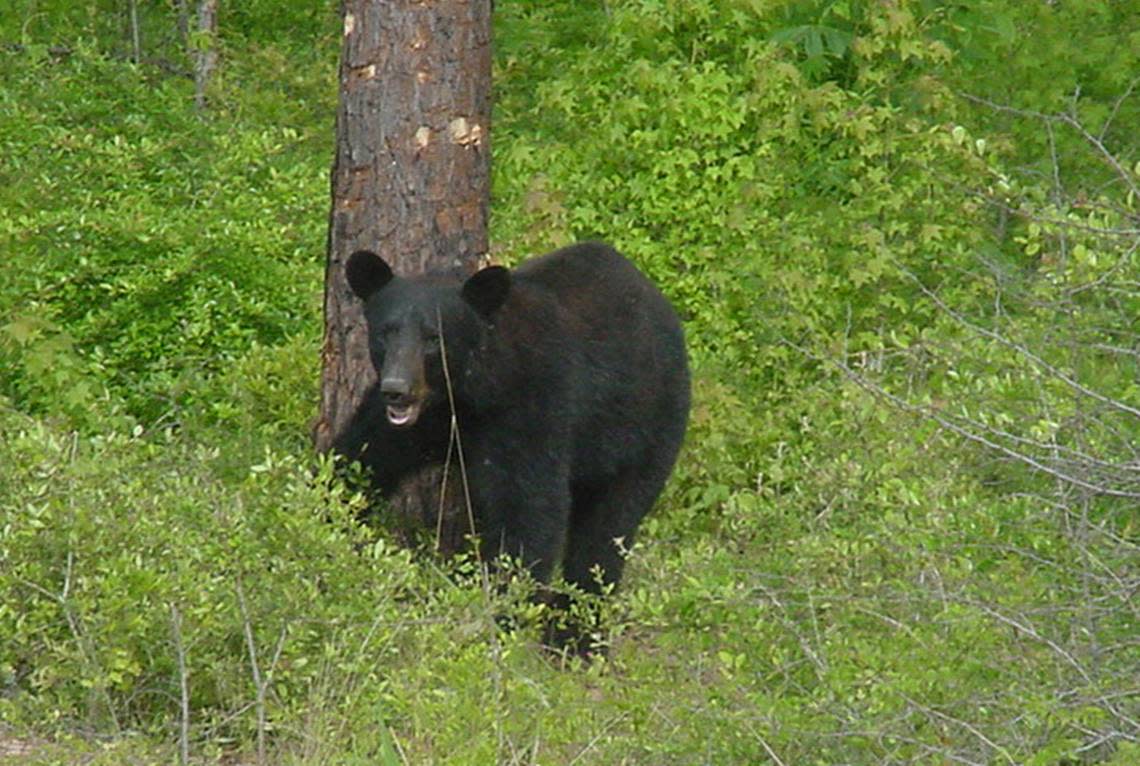
Black bears are the largest land mammals in South Carolina and can generally be found in two resident populations in the state, one being in the mountains and upper Piedmont and one in the coastal plain, as detailed by SCDNR.
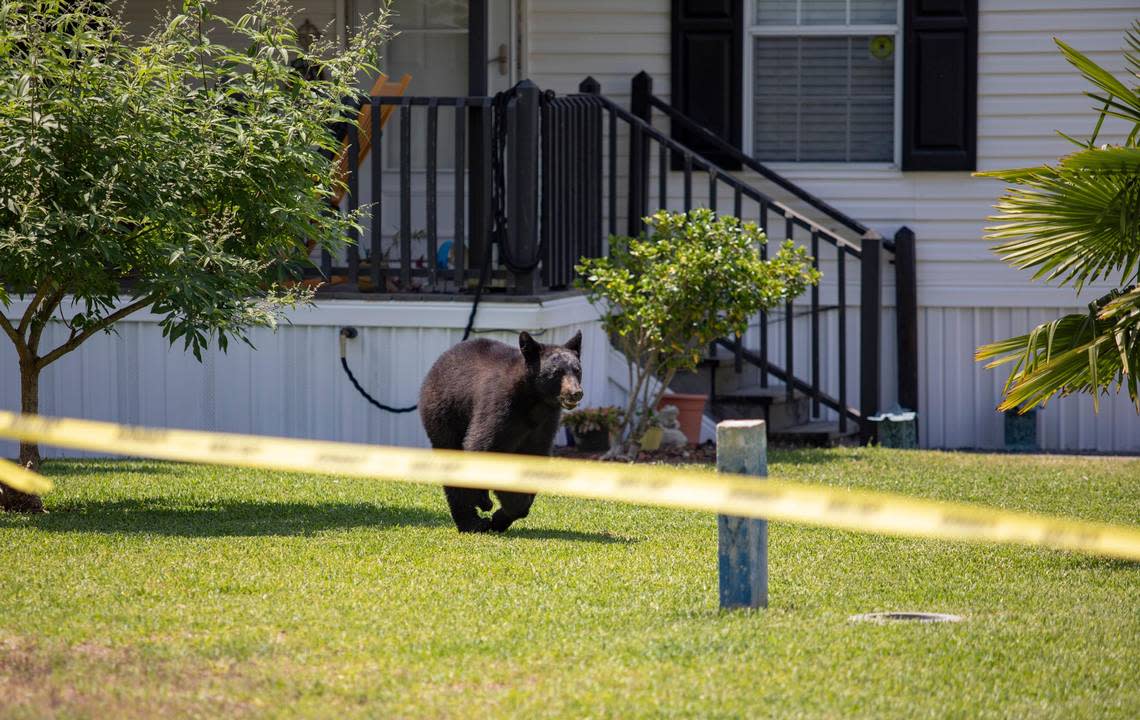
Black bears are covered in long thick fur that tends to be black or dark brown in color with a light brown snout. Each foot on a black bear has five curved claws, about 1 inch long, that do not retract. They also have good eyesight and sense of smell with the additional ability to climb and swim.
“Bears are massive, strong animals” and luckily they generally avoid humans. However, they have attacked people, but encounters are rarely fatal, reported SCDNR. It’s best to keep a safe distance from these animals and, if a bear starts to approach, shout and wave your arms to try to scare off the animal.
Cottonmouth
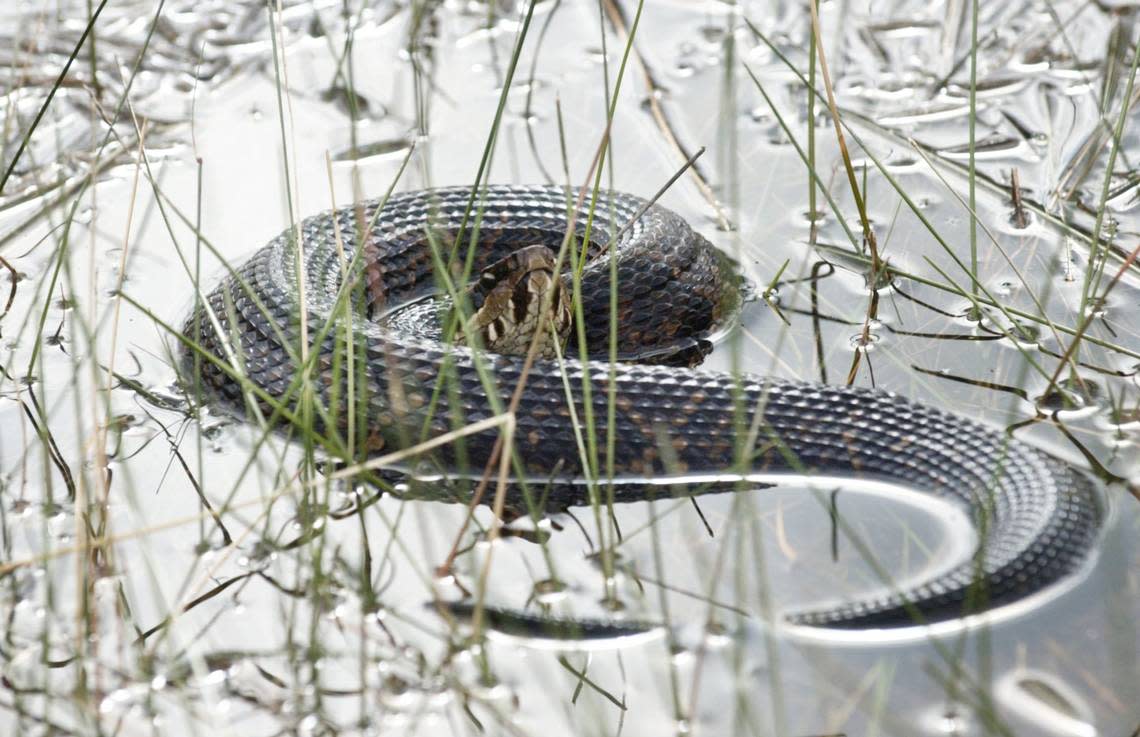
Cottonmouth snakes are venomous, semi-aquatic snakes that are strong swimmers and live near water. These snakes also go by the nickname “water moccasin,” which comes from their ability to swim and their dark brown or black coloring. They have large, triangular heads and wide jowls due to their venom-filled glands. These snakes are large and typically range 24 - 48 inches in length, according to the University of Georgia’s Savannah River Ecology Laboratory.
These pit vipers are generally found in or close to a body of water, which is where their prey resides. More mature snakes appear to be darker in color as their distinctive markings fade. Cottonmouth heads will be considerably thicker than their necks and have thick, short tails. Additionally, the males are larger than their female counterparts. The older adult snakes are often dark and solid-colored. The juveniles are more brightly patterned than adults with a sulfur-yellow tail tip, which they use to wiggle to attract and trick their prey.
Eastern Diamondback Rattlesnake

The eastern diamondback rattlesnake is the most venomous snake in North America and the largest of its species in the world. This snake has a distinct color pattern, which consists of dark, diamond-shaped dorsal blotches that are defined by a border of yellowish scales, reports SCDNR. Some of these snakes can reach up to 8 feet in length and are most active during the day and at dusk. A bite from this rattlesnake is extremely painful and can be fatal if not treated quickly with the proper antivenom.
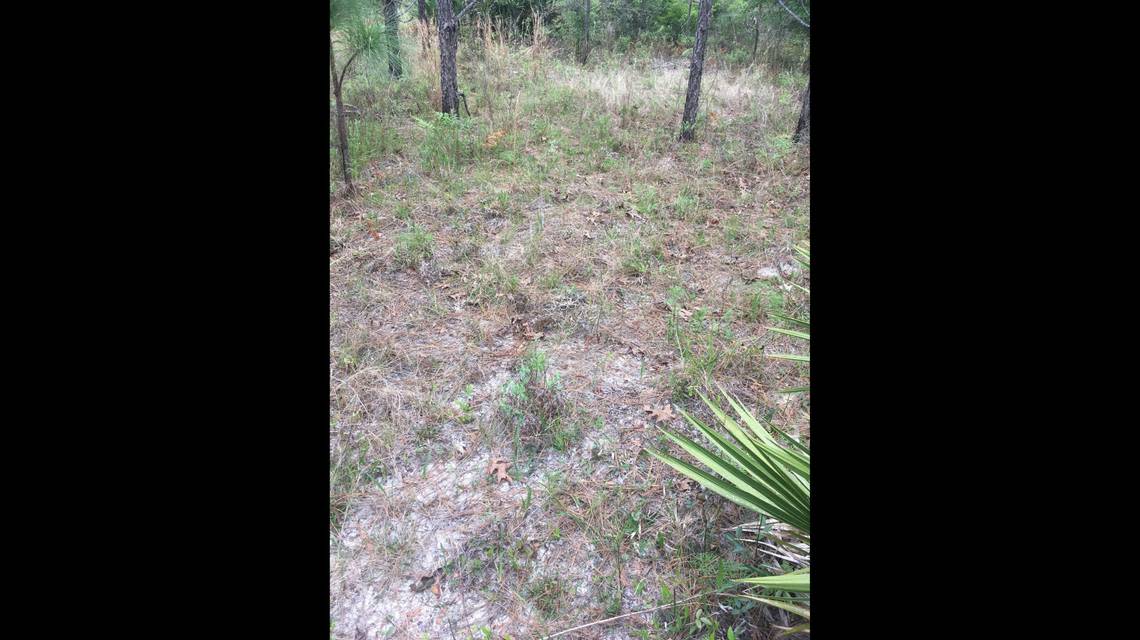
“Eastern diamondback rattlesnakes are well known for their rattle and painful, venomous bite, which can be fatal to humans. The toxin in their venom, called hemotoxin, kills red blood cells and causes tissue damage. That said, human deaths from rattlesnake bites are rare, because the antivenom is available throughout its range,” according to the Smithsonian’s National Zoo and Conservation Biology Institute.
Copperhead
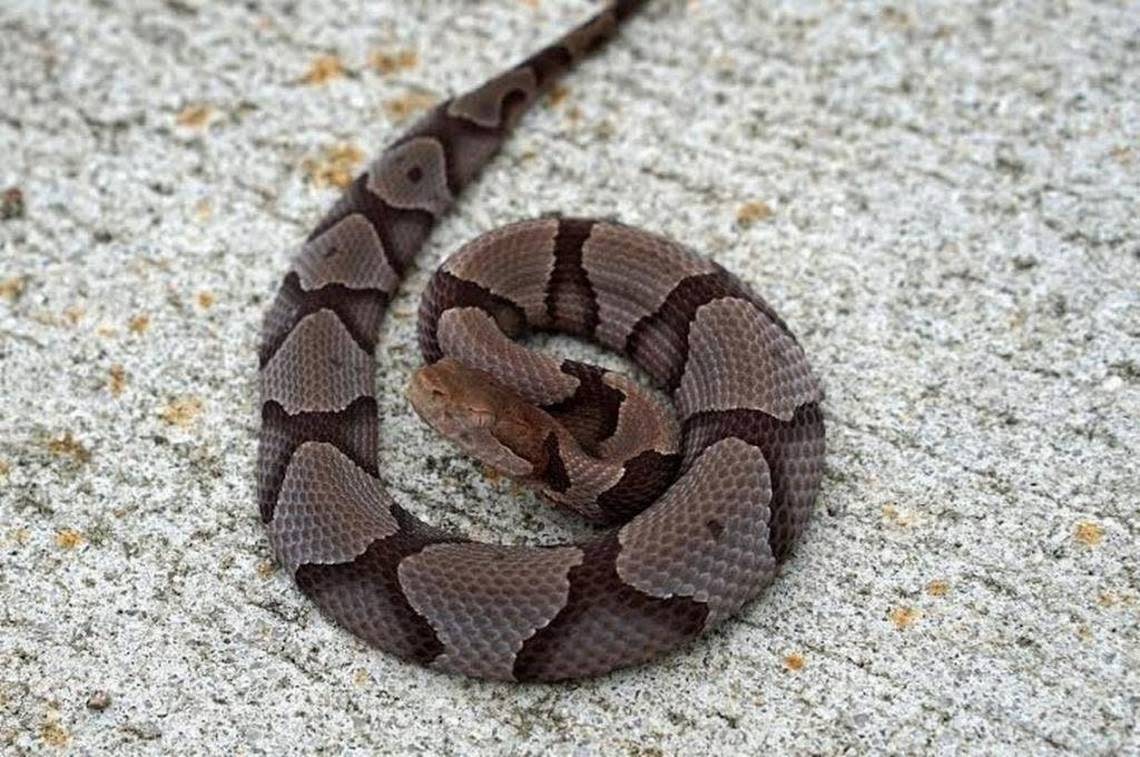
The copperhead is South Carolina’s most common venomous snake. Copperheads can be found throughout the state, and watching where you step is extremely important when dealing with these snakes, as they tend to blend in with their surroundings, usually in nearby pine straw and other forested or rocky areas in the state.
Their coloration can vary from pinkish or grayish in color to a coppery-tan with dark brown hourglass or Hershey Kiss-shaped bands with its head typically being a copper color and triangular in shape. Copperheads can reach a length of 4 feet, but the average adult generally reaches between 2-3 feet in length.
These pit vipers generally behave nocturnally during the warmer, summer months, but are more active during the daytime hours throughout the spring and fall as these are their courting and mating seasons. Females can birth up to 20 live young during the late summer or early fall, according to the North Carolina Wildlife Resources Commission.
Copperheads have fangs that release a hemolytic venom, which causes the breakdown of red blood cells and is used to subdue their prey. The length of the snake’s fangs is related to its size, meaning that the longer the snake is, the longer its fangs. Even if it looks young and possibly even harmless, newborn copperhead snakes have fully functional fangs capable of injecting venom that is just as toxic as an adult’s venom, detailed the Smithsonian’s National Zoo & Conservation Biology Institute.
Other dangerous venomous snakes in South Carolina include the Coral Snake, Pigmy Rattlesnake, and the Timber Rattlesnake.
